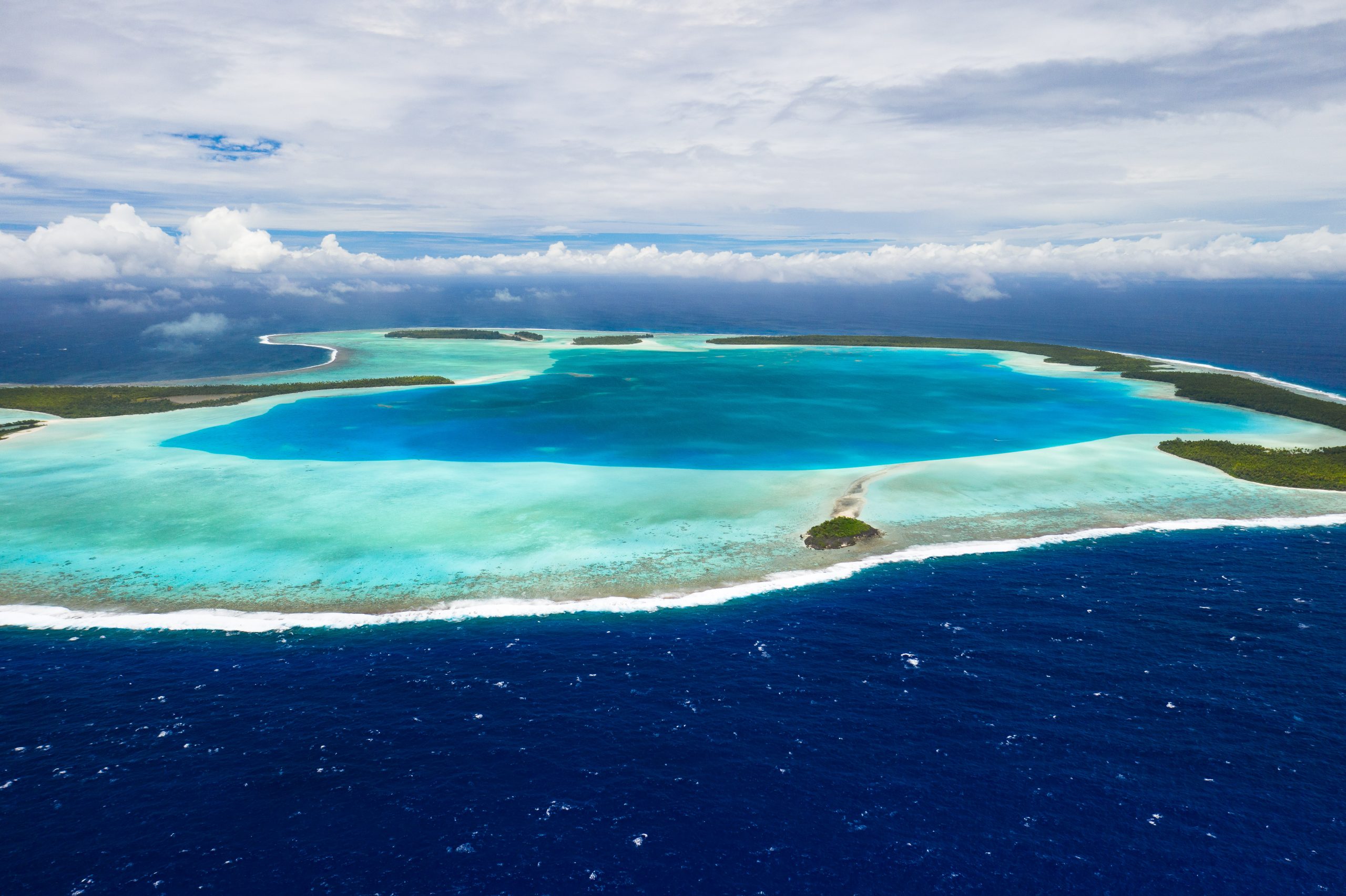
Le Brando à Tetiaroa, une légende
Est-il le meilleur hôtel du monde ? C’est un endroit unique en son genre. Pas seulement pour son cadre exceptionnel mais aussi pour son niveau de service et pour son caractère écologique – si un seul hôtel au monde devait mériter le terme d’eco-resort, ce serait bien lui ! – et surtout pour son histoire, puisqu’avant de devenir le paradis terrestre qu’il est aujourd’hui ce fut l’île de Marlon Brando.

Il fait invariablement partie des références des amateurs de luxe ultime lorsque ceux-ci parlent des meilleurs hôtels du monde. Ayant la chance, par notre activité professionnelle, de fréquenter ceux-ci et d’avoir le loisir de les comparer, et dépourvus de toute contrainte publicitaire, nous pouvons affirmer qu’avec les Cheval Blanc et North Island, le Brando fait indiscutablement partie du top 5 de l’hôtellerie planétaire. Une position qui tient à la fois à son emplacement (l’incontournable location, location, location), au niveau de ses villas, à sa gastronomie, à la perfection de ses services, à son impact quasiment nul sur l’environnement, et aussi – même s’il est politiquement incorrect de l’exprimer – à la qualité de sa clientèle. Une quinte flush.
Petit atoll perdu dans le Pacifique sud, Tetiaroa fut longtemps l’île privée de Marlon Brando, à l’époque où celui-ci était une star planétaire. Un temps que les moins de vingt ans ne peuvent pas connaitre : qu’ils sachent juste que dans les années 60 Brando était aussi connu que Brad Pitt, Tom Cruise ou Lady Gaga aujourd’hui. Lieu de résidence de la famille royale tahitienne aux XVIIIème et XIXème siècles, l’atoll présente la particularité de n’être accessible que par voie aérienne, ne disposant d’aucune passe permettant l’entrée d’un bateau. En 1962, Marlo Brando tourne Les révoltés du Bounty à Tahiti, Bora Bora et Mooréa, et est invité par les autorités locales à visiter l’île royale de Tetiaroa. Il a éprouvé un premier coup de foudre au début du tournage en la personne de Tarita Perripaia, jeune figurante tahitienne qu’il a imposée comme premier rôle féminin du film, il en connait un second en découvrant l’atoll, qu’il propose immédiatement d’acheter. Les tractations vont prendre quatre ans, mais dès l’acquisition faite la star d’Hollywood s’installe à Tetiaroa avec sa jeune femme (Tarita a dix-sept ans de moins que lui) et leurs deux enfants : la passion de Brando pour les lieux n’est pas un caprice de star mais un engagement profond.
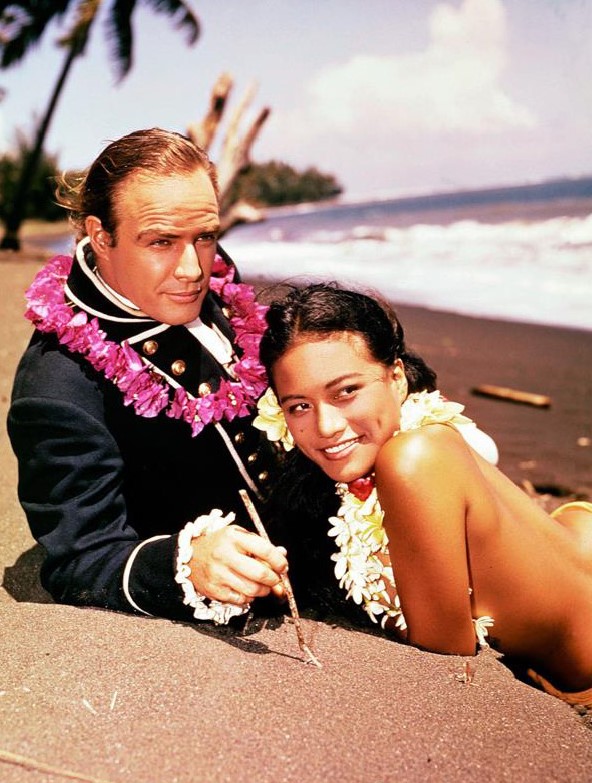
Pour recevoir ses amis l’acteur fait construire cinq bungalows avant, quelques années plus tard, d’essayer de rentabiliser son île en ouvrant un petit hôtel (14 farés) au confort sommaire. Las : son exploitation sera toujours déficitaire, et lorsqu’un cyclone dévaste l’île en 1994 il n’a plus les moyens de faire reconstruire les bâtiments dévastés, ayant été ruiné par la défense judiciaire de son fils Christian, qui a tué le petit ami de sa demi-sœur Cheyenne, la fille que Marlon a eue avec Tarita. Un an plus tard et alors que Christian commence à purger sa peine de dix ans de prison, Cheyenne se suicide. Devenu obèse et vivant en ermite dans sa propriété de Mulholland Drive, Brando n’est plus que l’ombre de la star qu’il a été. Mais il garde une passion pour Tetiaroa et, ne voulant pas que son paradis tombe en désuétude, prend contact avec l’Américain Richard Bailey, qui a bâti le groupe hôtelier Pacific Beachcomber. Ensemble les deux hommes vont concevoir ce qui deviendra le Brando. Trois fondamentaux ne sont pas négociables pour l’acteur : l’hôtel devra respecter la nature, donner à chacun de ses clients la même impression d’être seul au monde qu’il a lui-même ressentie lorsqu’il a découvert l’île, et être refroidi par un système de climatisation non polluant utilisant l’eau des profondeurs. Brando ne sait pas si l’idée est réalisable ou pas, mais il y tient. De fait, en homme d’affaires avisé Bailey fait travailler des scientifiques sur le projet, et ceux-ci lui confirment la faisabilité théorique de l’idée. C’est ainsi que nait le SWAC (Sea Water Air Conditionning) qui équipe aujourd’hui le Brando, dont le principe est d’aller chercher à 950 mètres de profondeur une eau à 4°C qu’une machinerie électrique ramène ensuite à la surface, où elle est utilisée pour climatiser tout l’hôtel.
La disparition de Marlon Brando en 2004, puis sa succession (pas moins de quatorze enfants !) va contrarier le planning du projet, les travaux ne commençant finalement qu’en 2009. Treize ans et 120 millions d’euros d’investissement plus tard, le Brando est un resort 100% éco-responsable qui annonce avec fierté une empreinte carbone zéro, la totalité de ses besoins en énergie étant couverte par le SWAC et 2400 panneaux solaires disposés le long des 775 mètres de la piste d’atterrissage. L’eau de mer est dessalée puis déminéralisée, l’eau de pluie récupérée et traitée, les déchets transformés en engrais par un matériel complexe : Brando en aurait été fier. Ainsi que de la Tetiaroa Society, qui permet à la communauté scientifique internationale de s’installer sur place pour effectuer ses recherches sur la préservation des atolls, qui sont ensuite partagées avec les universités les plus prestigieuses du monde, comme Berkeley et Washington.
UNE OFFRE ALL INCLUSIVE HAUT DE GAMME
La formule tarifaire du Brando est unique dans le petit cercle de l’hôtellerie (très) haut de gamme. Partout dans le monde en effet, « all inclusive » est synonyme d’établissements low cost, et de prestations à l’avenant. Telle est pourtant la formule décidée par Richard Bailey. A la différence près qu’ici le all inclusive couvre une restauration gastronomique, une carte des vins comparable à celles des grands restaurants, et concerne exclusivement des villas de grand luxe, toutes agrémentées d’une piscine privative.
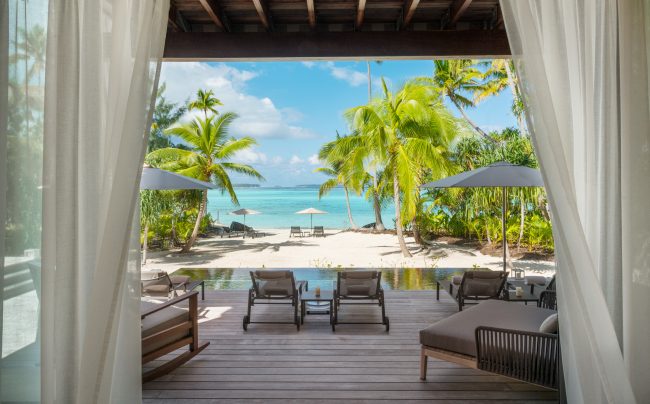
Au premier abord d’aucuns pourront considérer que les 3800 euros par nuit assortis de l’obligation de séjourner au minimum trois nuits font du Brando un hôtel très cher. C’est une vision courte si l’on considère qu’une nuitée dans n’importe quel 5 étoiles de Paris, Londres ou New York, est facturée entre 1000 et 2000 euros, et que le moindre repas à deux y coûte au minimum 200 euros, souvent 500 et plus si l’on se fait plaisir avec une bouteille de bon vin ; et que la formule du Brando inclut trois repas quo- tidiens pour deux personnes. Observés à l’aune de ces remarques, les tarifs pratiqués par l’hôtel apparaissent immédiatement nettement plus doux. Ceci sans présumer du niveau des villas. Généreux, leurs volumes incluent une grande chambre dotée d’une alcôve de lecture, un vaste double dressing, une salle de bain très lumineuse (car dotée de portes-fenêtres sur deux côtés), un grand salon ouvert sur la terrasse, la piscine, la plage et l’océan, une media-room accueillant un bureau de travail face à la mer, un ensemble audio-vidéo de grande qualité, une large terrasse distribuant un salon où prendre les repas, des transats et une balancelle où se reposer, et une piscine en pierre irisée. Matériaux et finitions sont irréprochables : de toute évidence l’économie n’est pas entrée en ligne de compte pour la construction et la décoration, seul le résultat importait. Et il est là, magistral.
Le diable se cachant dans les détails, parmi d’autres on mentionnera les sacs de toile griffés Le Brando offerts aux clients (façon sac à dépêche pour Monsieur et bagage 24 heures pour Madame), les deux thermos, les vélos mis à disposition, les amenities raffinées…
UNE CLIENTÈLE DISCRÈTE
Last but not least : l’une des caractéristiques appréciables – et appréciées – du Brando est sa clientèle, très éloignée de celle de Cannes ou de Saint-Tropez. Ici la discrétion est de mise, et spontanément pratiquée par tous. Principalement américaine, et jusque là en bonne partie constituée d’honeymooners, elle a évo- lué durant les deux années de Covid-19, pour accueillir désormais beaucoup plus de familles, qui se déplacent à six ou huit personnes et occupent les villas à deux, trois et quatre chambres, réunissant généralement trois générations désormais désireuses – voilà pour le bon côté de la pandémie et des confi- nements qu’elle a imposé – de passer du temps ensemble.
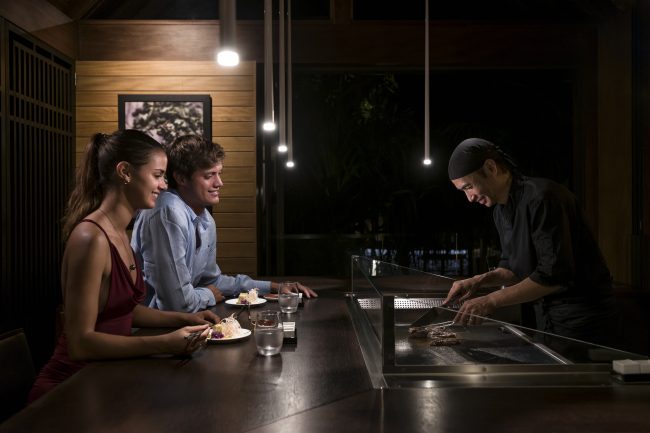
Un dernier point mérite encore d’être souligné : il s’agit de la présence de plus en plus soutenue des fameux repeaters, nouvelle pierre philosophale de l’hôtellerie de luxe – ces clients qui adoptent un établissement et y reviennent régulièrement. Ainsi la Direction de l’hôtel a-t-elle observé que si la Polynésie fait partie de la wish-list de millions de personnes dans le monde, le premier séjour passe généralement par quelques jours à Tahiti, quelques autres à Bora Bora, autant à Mooréa, et se termine en apothéose pour les plus aisés par trois ou quatre jours à Tetiaroa. Mais que le second séjour se fait uniquement au Brando, parce que les autres destinations ont été vues et que celle-ci est unique au monde. Une position due autant à l’endroit qu’au personnel, dont l’engagement et l’authenticité participent de la perfection du séjour.
Un scoop pour finir : le Brando réfléchit actuellement à un projet de villas à la vente en time sharing géré par l’hôtel : à bon entendeur…


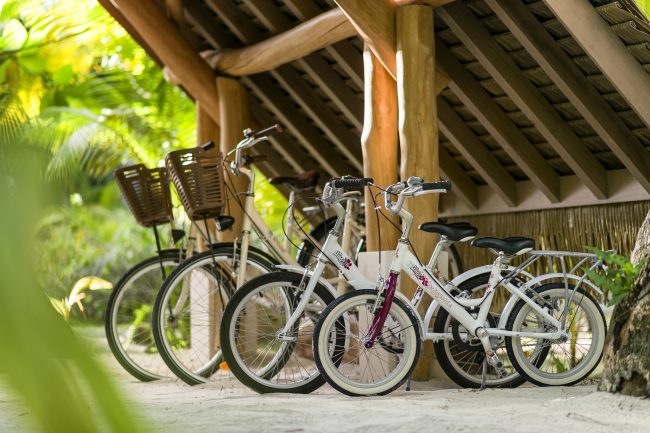

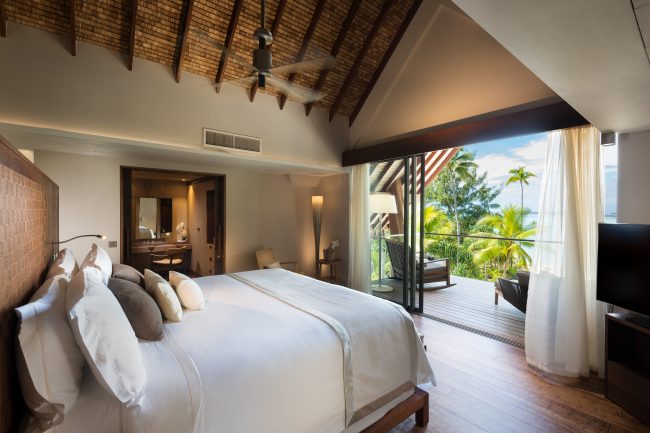
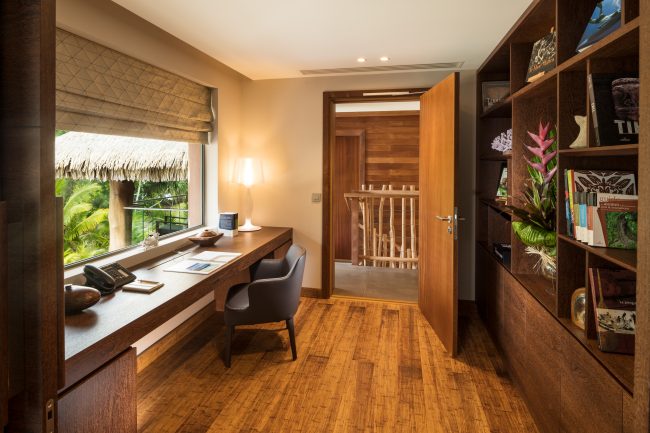
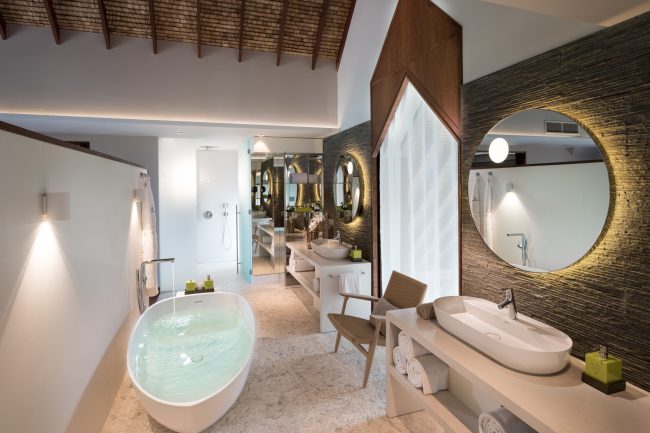

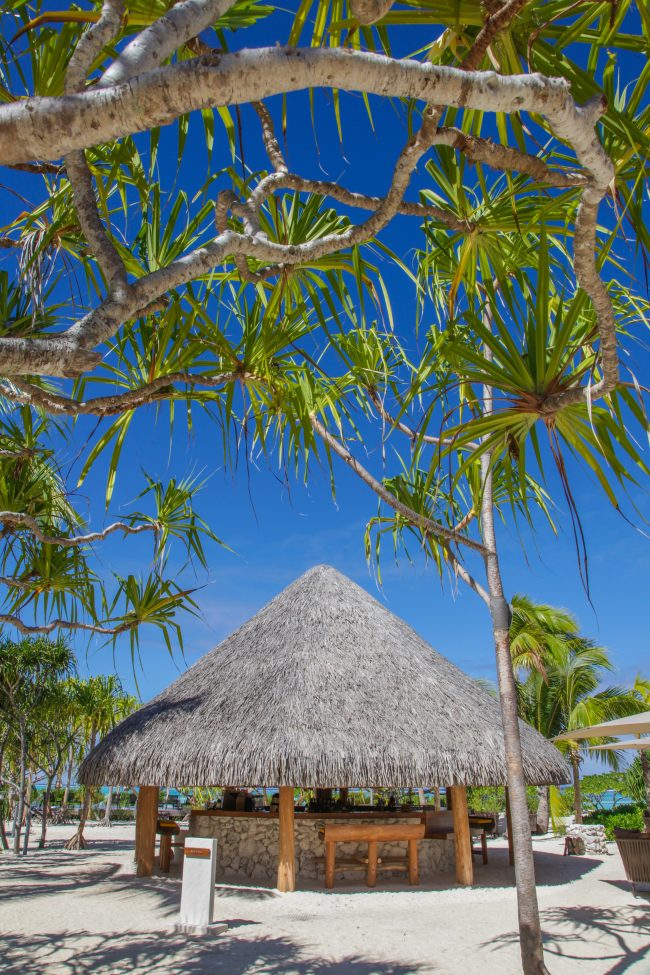
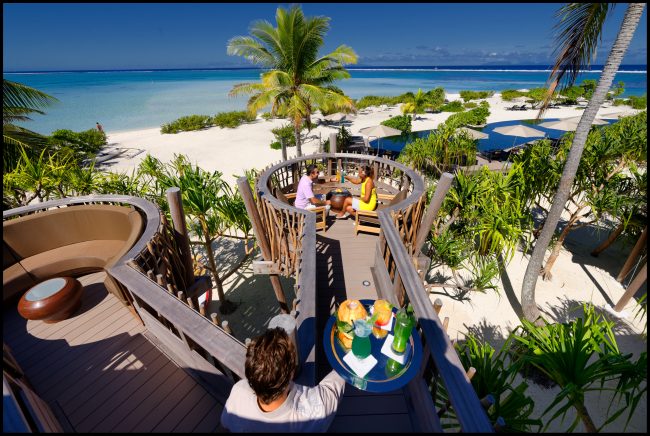
TAHITI. ATOLL DE TETIAROA. HOTEL BRANDO. LE BAR PANORAMIQUE DU LAGON. 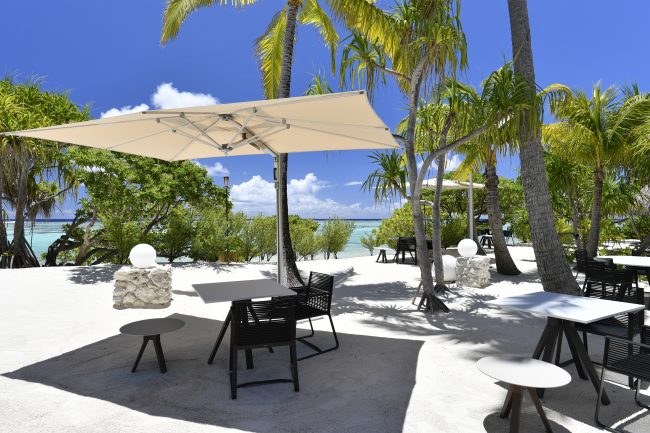

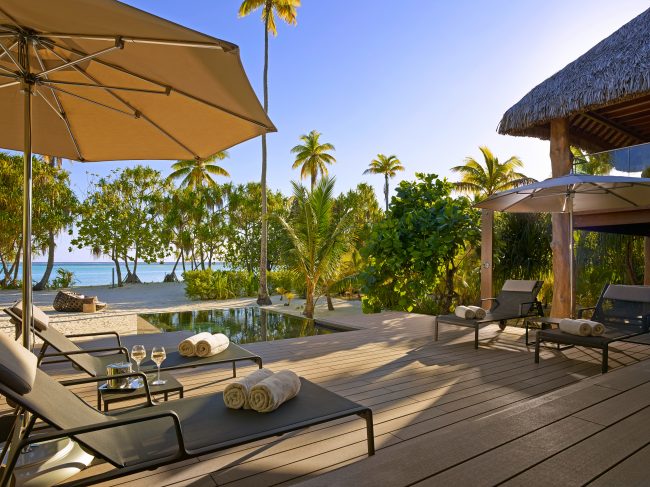
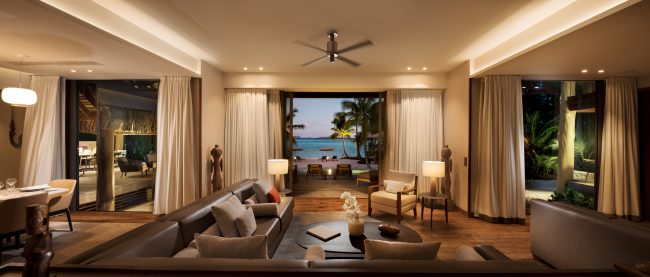
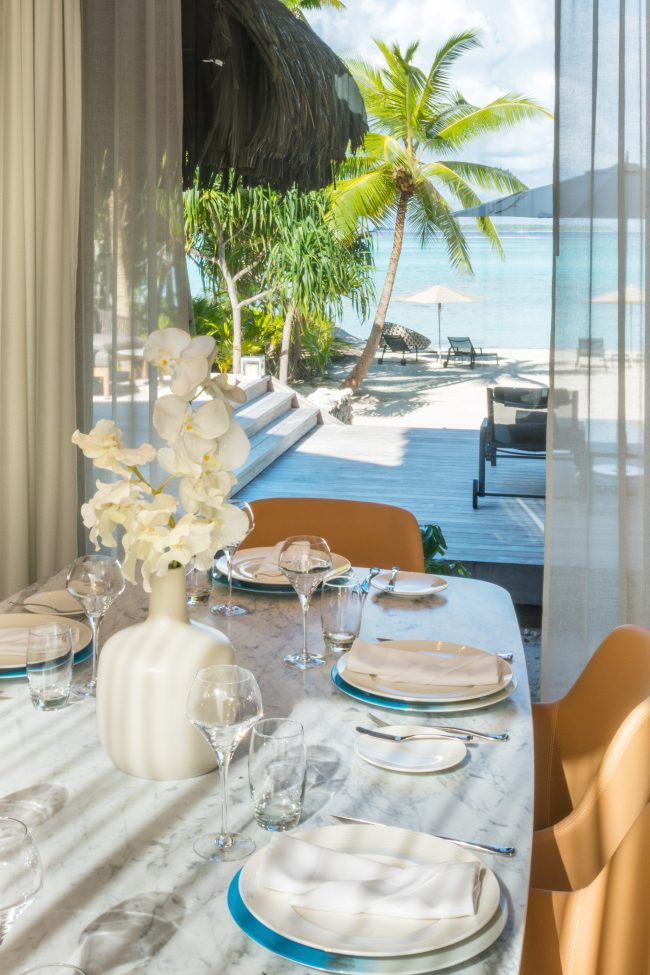
_________________________________________________________________
THE BRANDO IN TETIAROA: A LEGEND
IS IT THE BEST HOTEL IN THE WORLD?
It is invariably part of the references of the ultimate luxury lovers when they talk about the best hotels in the world. Having the chance, through our professional activity, to frequent them and to have the leisure to compare them, and without any advertising constraint, we can affirm that with the Cheval Blanc and North Island, the Brando is indisputably part of the top 5 of the planetary hotel industry. A position that is due to its location (the inevitable location, location, location), to the level of its villas, to its gastronomy, to the perfection of its services, to its almost zero impact on the environment, and also – even if it is politically incorrect to express it – to the quality of its customers. A straight flush.
A small atoll lost in the South Pacific, Tetiaroa was for a long time Marlon Brando’s private island, at a time when he was a world star. A time that the less than twenty years old cannot know: let them just know that in the sixties Brando was as famous as Brad Pitt, Tom Cruise or Lady Gaga today. Home to the Tahitian royal family in the 18th and 19th centuries, the atoll is unique in that it is only accessible by air, with no pass for a boat to enter. In 1962, Marlo Brando filmed The Bounty Rebels in Tahiti, Bora Bora and Mooréa, and was invited by the local authorities to visit the royal island of Tetiaroa. He fell in love at first sight with Tarita Perripaia, a young Tahitian extra whom he cast as the film’s female lead, and he fell in love again when he discovered the atoll, which he immediately offered to buy. The negotiations took four years, but as soon as the purchase was made, the Hollywood star moved to Tetiaroa with his young wife (Tarita was seventeen years younger than him) and their two children: Brando’s passion for the place was not a star’s whim but a deep commitment. To receive his friends, the actor built five bungalows before, a few years later, trying to make his island profitable by opening a small hotel (14 farés) with basic comfort. Unfortunately, his business was always loss-making, and when a cyclone devastated the island in 1994, he no longer had the means to rebuild the devastated buildings, having been ruined by the legal defence of his son Christian, who had killed the boyfriend of his half-sister Cheyenne, the daughter Marlon had had with Tarita. A year later, as Christian begins to serve his ten-year prison sentence, Cheyenne commits suicide. Now obese and living as a hermit on his Mulholland Drive estate, Brando is a shadow of the star he once was. But he still has a passion for Tetiaroa and, not wanting his paradise to fall into disuse, contacts the American Richard Bailey, who has built the Pacific Beachcomber hotel group. Together the two men designed what would become the Brando. Three basic requirements were non-negotiable for the actor: the hotel would have to respect nature, give each of its guests the same feeling of being alone in the world that he himself had felt when he discovered the island, and be cooled by a non-polluting air conditioning system using deep-sea water. Brando doesn’t know if the idea is feasible or not, but he wants to do it. In fact, as a shrewd businessman, Bailey gets scientists to work on the project, and they confirm the theoretical feasibility of the idea. This is how the SWAC (Sea Water Air Conditioning) was born, which today equips the Brando, and whose principle is to fetch water at a depth of 950 metres, which is then brought to the surface by an electric machine, where it is used to air-condition the entire hotel. The death of Marlon Brando in 2004, followed by his succession (no less than fourteen children!) will upset the project schedule, with work not finally starting until 2009. Thirteen years and 120 million euros of investment later, the Brando is a 100% eco-responsible resort that proudly announces a zero carbon footprint, all of its energy needs being covered by the SWAC and 2400 solar panels placed along the 775-metre runway. Seawater is desalinated and demineralised, rainwater is collected and treated, and waste is transformed into fertiliser using complex equipment: Brando would have been proud of this. As well as the Tetiaroa Society, which allows the international scientific community to settle on site to carry out its research on the preservation of the atolls, which is then shared with the most prestigious universities in the world, such as Berkeley and Washington.
A HIGH END ALL-INCLUSIVE OFFER
The Brando’s pricing formula is unique in the small circle of the (very) high end hotel industry. All-inclusive” is synonymous with low cost establishments all over the world, and with services that are not up to standard. Yet this is the formula decided by Richard Bailey. The difference is that here, all-inclusive covers gourmet dining, a wine list comparable to those of the great restaurants, and concerns exclusively luxury villas, all with private swimming pools.
At first sight, some may consider that the 3800 euros per night and the obligation to stay a minimum of three nights make the Brando a very expensive hotel. This is a short-sighted view when one considers that a night in any five-star hotel in Paris, London or New York costs between 1000 and 2000 euros, and that a single meal for two costs a minimum of 200 euros, often 500 and more if one indulges in a bottle of good wine, and that the Brando’s formula includes three daily meals for two people. In the light of these remarks, the prices charged by the Brando appear immediately to be much lower.
This is without prejudice to the standard of the villas. Generous, their volumes include a large bedroom with a reading alcove, a vast double dressing room, a very luminous bathroom (because it has French windows on two sides), a large living room open onto the terrace, the swimming pool, the beach and the ocean, a media room with a work desk facing the sea, a high-quality audio-video system, a large terrace distributing a living room where you can have meals, deckchairs and a swing where you can rest, and a swimming pool in iridescent marble. The materials and finishes are impeccable: it is clear that economy was not a factor in the construction and decoration, only the result mattered. And there it is, masterly. The devil is in the details, among others we can mention the canvas bags with the Le Brando logo offered to the clients, like a rucksack for the gentleman and a 24-hour luggage for the lady, the two thermos flasks, the bicycles at disposal, the refined amenities…
A DISCREET CLIENTELE
Last but not least: one of the appreciable – and appreciated – characteristics of the Brando is its clientele, very different from that of Cannes or Saint-Tropez. Here discretion is the rule, and spontaneously practiced by all. Mainly American, and until then largely made up of honeymooners, it has evolved during the two years of Covid-19, to welcome many more families, who travel in groups of six or eight and occupy the two, three and four bedroom villas, generally bringing together three generations who are now willing – this is the good side of the pandemic and the confinements it has imposed – to spend time together. One last point deserves to be emphasised: it is the increasingly sustained presence of the famous repeaters, the new philosopher’s stone of the luxury hotel industry – these clients who adopt an establishment and return regularly. Thus, the hotel management has observed that if Polynesia is part of the wish-list of millions of people in the world, the first stay generally includes a few days in Tahiti, a few more in Bora Bora, as many in Mooréa, and ends in apotheosis for the most affluent with three or four days in Tetiaroa. But that the second stay is only at the Brando, because the other destinations have been seen and this one is unique in the world. This is due as much to the location as to the staff, whose commitment and authenticity contribute to the perfection of the stay.
A scoop to finish: the Brando is currently thinking about a project of residences for sale in time-sharing managed by the hotel: good luck…
